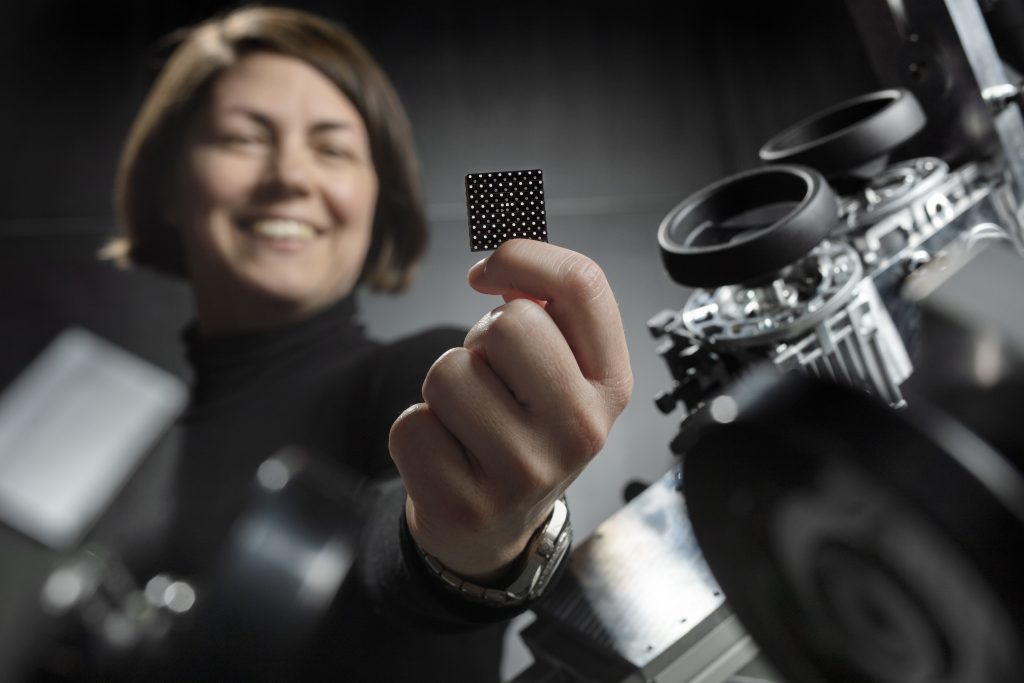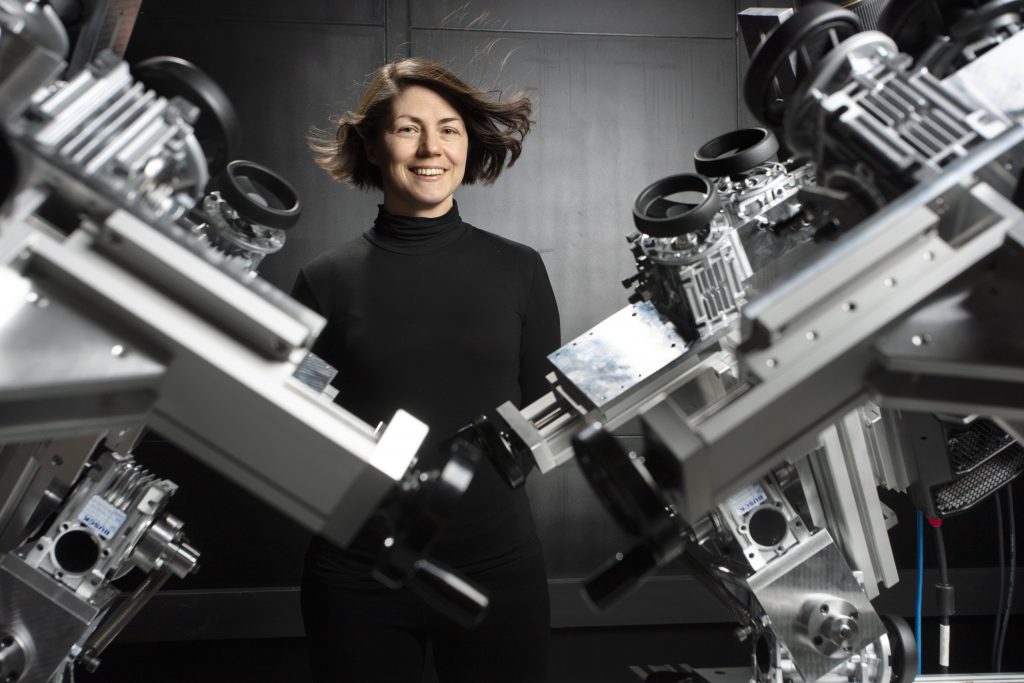Turbulence is one of the fundamental problems in the world of physics. A problem that cannot yet be described mathematically in all its forms. The problem is not only interesting in terms of research, but also relevant to the many companies working with turbulence in their products.
Over the past five years, Associate Professor Clara Velte at DTU has established a Centre of Excellence in turbulence. The centre includes two laboratories and the development of new methods for working with turbulence in order to create a new theoretical framework.

The turbulence laboratories at DTU were built by Clara Velte and her group with funding from the Grundfos Foundation and an ERC Starting Grant. Photo: DTU
The results of the work have been published in several scientific articles and shed new light on turbulence and its dynamics.
“So far, we have arrived at three very basic results that are interesting in relation to our work on being able to describe new aspects of turbulence based on the governing equations,” says Clara Velte.
“The first is to include time as a parameter in the analysis of turbulence. Until now, the time dimension has been omitted from the analysis of the equation behind the calculation of turbulence. But by including time in the analysis, it becomes possible to see the dynamic development in all turbulence and in this way, you can better explain many phenomena in turbulence that change over time, for example turbulence around wind turbines, in pumps, and various sprays.”
Measured turbulent flows decomposed into waves
The second theoretical innovation is that Clara Velte’s research group—using measurements, simulations, and calculations—has shown that some of the existing knowledge about turbulence is correct. These are Navier Stokes nonlinear equation triangle signals, the so-called solutions to Burger’s equation. They are well-known but were not believed to be possible or physical. Now, through the new measurements and simulations, it has been proven that the triangle signals are indeed existing and physical.
“We have been able to show this with very simple experiments, where we have filtered out the pressure noise and other disturbing effects and thus seen that these types of triangle signals actually occur in the velocity signals of turbulence,” says Clara Velte.
The third and final result is linked to a basic understanding of the role of symmetries in turbulence, which has been observed empirically through basic ‘similarities’, but where it has not been possible to explain how self-similarity arose. Clara Velte can now explain this with the help of Emmy Nöther’s theory of fundamental symmetries that are transferred to the conservation of momentum, mass, energy, etc., and which shows the underlying mechanisms of symmetries giving rise to similarity solutions. The DTU researchers have now shown that this theory also applies to turbulence, and that its symmetry can thus be explained.
All in all, there are three significant new insights that Clara Velte explains in this way:
“Overall, you can say that we have developed methods for dividing our laboratory measurements of turbulence flows into waves. This has made it possible for us to analyse them mathematically and gain new insights into the dynamics of turbulence.”

The turbulence laboratories at DTU were built by Clara Velte and her group with funding from the Grundfos Foundation and an ERC Starting Grant. Photo: DTU
Measurements at the limit of what is possible
In 2019, Clara Velte received an ERC starting grant and a grant from the Grundfos Foundation to build a Centre of Excellence in turbulence at DTU. The turbulence laboratories at DTU are built by Clara Velte and her group. ‘Built’ should be understood quite literally, because the laboratories consist of a number of components and sub-elements that the researchers themselves have put together and developed.
“It has allowed us to go all the way to the very limit of what is possible to measure, for example with laser light. But of course, it has taken time to build, just as there are still a few improvements to be made to achieve the optimal result,” says Clara Velte.
Clara Velte is therefore pleased with the new grant she has received for her work from the Foundation. The grant will be used to optimize the final details in the laboratories, and it has also proved necessary to upgrade the server used to collect data from the experiments.
“We initially thought it would be a problem to store the large amount of data from our measurements. This has turned out to be less problematic than expected, but the computational resources do not have sufficient capacity to process the data. Currently, data from some of our experiments will take up to three years to process, and we don’t have that much time. Therefore, we need to switch from CPU to GPU, just as we’ll work with distributed processing that performs parallel calculations in the future.”
Sharing new knowledge
However, the new grant will first and foremost be used to continue working on creating new and better knowledge about turbulence. Knowledge that must not only be published in scientific journals, but also communicated to companies that would benefit from a deeper understanding of turbulence.
“We already collaborate with several companies where turbulence is an important part of their products. I’m also often invited to give lectures, but we want to spread our knowledge and new insights into turbulence to many more companies in an easily accessible way. It may be short ‘mini-lectures’ on our website or similar,” says Clara Velte.
Clara Velte’s vision is to replace the existing theory of turbulence with a new one that allows us to better understand, describe, and—ultimately—calculate and predict turbulence. Her work so far has taken us a step further towards this goal.

